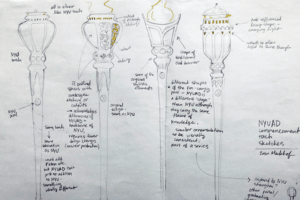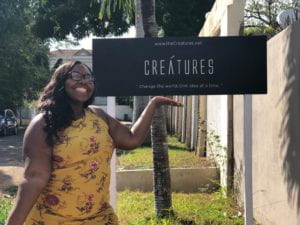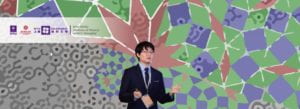Today we are conversation with Stephen Shore and Kristie Patten Koenig about the Steinhardt course they co-taught at NYU London last J-Term and will soon be teaching again in January 2020. The course, Shifting to a Strength Based Paradigm: A Focus on Autism and Well-being Comparative Analysis Between the UK and the US, their experiences in London, and more is discussed below.
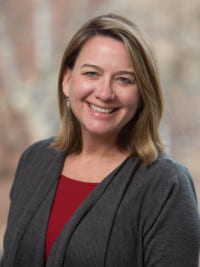 Kristie Patten Koenig, PhD, OT/L, FAOTA, Associate Professor, New York University, Department of Occupational Therapy. Dr. Patten Koenig is an occupational therapist, with a PhD in Educational Psychology who examines the efficacy of interventions utilized in public schools for children and adolescents with autism spectrum disorders. Her research focuses on utilizing a strength based paradigm and the individual with ASD’s perspective to understand the impact of these issues on quality of life and adaptive behavior in order to guide person centered interventions utilizing strengths in inclusive settings. Dr. Koenig is the Principal Investigator of the NYU Steinhardt’s ASD Nest Program, an inclusive program for children and adolescents with autism in the New York City Department of Education. She is currently Co-PI of a NSF grant entitled “IDEAS: Inventing, Designing and Engineering on the Autism Spectrum” that leverages STEM interests of middle school students with autism to develop social competence and potential career pathways. She is also PI of the GIFTED project, a 3 year grant project aimed at developing women leaders in public schools in Ghana. Dr. Patten Koenig teaches professional and post professional courses in the area of pediatric intervention, school based practice and the challenges and opportunities with autism spectrum disorders. Dr. Patten Koenig has published and presented nationally and internationally on topics related to examining the efficacy of public school interventions and examining autism from a strength based or abilities based model.
Kristie Patten Koenig, PhD, OT/L, FAOTA, Associate Professor, New York University, Department of Occupational Therapy. Dr. Patten Koenig is an occupational therapist, with a PhD in Educational Psychology who examines the efficacy of interventions utilized in public schools for children and adolescents with autism spectrum disorders. Her research focuses on utilizing a strength based paradigm and the individual with ASD’s perspective to understand the impact of these issues on quality of life and adaptive behavior in order to guide person centered interventions utilizing strengths in inclusive settings. Dr. Koenig is the Principal Investigator of the NYU Steinhardt’s ASD Nest Program, an inclusive program for children and adolescents with autism in the New York City Department of Education. She is currently Co-PI of a NSF grant entitled “IDEAS: Inventing, Designing and Engineering on the Autism Spectrum” that leverages STEM interests of middle school students with autism to develop social competence and potential career pathways. She is also PI of the GIFTED project, a 3 year grant project aimed at developing women leaders in public schools in Ghana. Dr. Patten Koenig teaches professional and post professional courses in the area of pediatric intervention, school based practice and the challenges and opportunities with autism spectrum disorders. Dr. Patten Koenig has published and presented nationally and internationally on topics related to examining the efficacy of public school interventions and examining autism from a strength based or abilities based model.
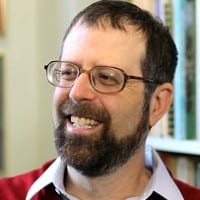 Dr. Stephen Shore is a professor at Adelphi University where his research focuses on matching best practice to the needs of people with autism. In addition to working with children and talking about life on the autism spectrum, Stephen is internationally renowned for presentations, consultations and writings on lifespan issues pertinent to education, relationships, employment, advocacy, and disclosure. His most recent book College for Students with Disabilities combines personal stories and research for promoting success in higher education. A current board member of Autism Speaks, president emeritus of the Asperger’s Association of New England, and advisory board member of the Autism Society, Dr. Shore serves on the boards of the Asperger Syndrome and High Functioning Autism Association, The US Autism and Asperger Association, the Scientific Counsel of OAR, and other autism related organizations.
Dr. Stephen Shore is a professor at Adelphi University where his research focuses on matching best practice to the needs of people with autism. In addition to working with children and talking about life on the autism spectrum, Stephen is internationally renowned for presentations, consultations and writings on lifespan issues pertinent to education, relationships, employment, advocacy, and disclosure. His most recent book College for Students with Disabilities combines personal stories and research for promoting success in higher education. A current board member of Autism Speaks, president emeritus of the Asperger’s Association of New England, and advisory board member of the Autism Society, Dr. Shore serves on the boards of the Asperger Syndrome and High Functioning Autism Association, The US Autism and Asperger Association, the Scientific Counsel of OAR, and other autism related organizations.
1. Can you both tell me about your backgrounds and how you came to know one another? Professor Koenig, I understand that your research focuses on using a strength based paradigm and the individual’s perspective in order to examine the efficacy of interventions in public schools for children an adolescents with autism spectrum disorders. You are at NYU Steinhardt and were recently in NYU London working with Dr. Stephen Shore, whom I understand is a professor at Adelphi University where his research focuses on matching best practices to the needs of people with autism.
Stephen – I am an autistic person. After eighteen months of typical development I got struck with what I call the regressive autism bomb. Like 30% of autistic people, at eighteen months I lost functional communication, had meltdowns, withdrew from the environment. In short, I became a very autistic little kid. There was so little known about autism in those days that it took my parents a whole year to find a place for a diagnosis and when they did the doctors said they had never seen such a sick child. The doctors recommended institutionalization and fortunately my parents, like so many parents do today, advocated on my behalf and they convinced the school to take me in about a year. It was during that year that they implemented what we would today refer to as an intensive home-based early intervention program and much of this program involved what Kristie and others refer to as sensory integration and sensory processing, so there was a lot of movement, there was also music, imitation, narration and so on. So with the work that my parents did, speech began to return at age four and it was also at that time that I acquired my first autistic deep interest, and that is contrasted with what the DSM [American Psychiatric Association’s Diagnostic and Statistical Manual of Mental Disorders] refers to as a restricted interest. Deep interests are fascinations and mine was taking apart watches. I would take out the back, pop out the motor, take that apart, put it together again. And the watch still worked and there weren’t any pieces left over. My parents noticed this with a mindset of asking what can our autistic son do, and they soon provided all kinds of other devices to take apart and put back together again. I entered the school that initially rejected me. I got re-evaluated. Instead of being considered a psychotic, I got upgraded to neurotic, so things were looking up.
I attended public school kindergarten at age six. I was a social and academic catastrophe. A lot of bullying, teachers didn’t quite know how to reach me, but at the same time I still had my deep interests and what I would do is go into the library and get all the books on what that interest was. It could have been astronomy, weather, earthquakes, electricity, mechanics. I would read them, take notes, copy diagrams. I remember one day in 3rd grade I had a stack of astronomy books on my desk and I was busy taking notes and copying diagrams and a teacher had told me that I would never learn how to do math, but somehow I eventually figured out just enough math to teach statistics at the university level.
Nowadays teachers are more aware of this type of deep interest and find ways to use it to teach the curriculum and make it intrinsically reinforcing. So moving on to middle and high school, most people find middle and high school difficult. It was actually easier for me because I was able to engage in my deep interest in music. I joined the band. I got so fascinated with music that I got it into my head that I needed to learn how to play all the instruments. I’d spend hours in the instrument closet figuring them out. I didn’t get them all down, but I did learn to play about fifteen instruments. And then when I heard that a requirement for a degree in music education was that you had to learn all the instruments, well, it didn’t seem better than that. So, off to college I went. There were no autism support colleges like the program at NYU and the one at Adelphi University. At that time it was thought that autistic people couldn’t even talk. Anyways, there I was, I got through my bachelor’s degree and went on to the master’s program in the same subject and then on to a doctorate in music education. I got through all the coursework. Then I started getting more interested in autism. So I defected over to the school of education and got my degree in special education with a focus on autism. During that time, during my doctoral degree, I had written a few books including an autobiography and another book on self-advocacy for autistic individuals, understanding autism for dummies, and I might have written more at that time but my advisor kind of gave me what for and said stop writing books and finish your dissertation. So I did. And then I was graduating in 2008 and beginning work as a professor of special education at Adelphi university and also working at NYU as well. So I divide my time now between teaching and researching on mostly autism related things, traveling and talking about autism, consulting about it around the world. I have talked about autism in 48 countries so far. The number of those countries is growing through my work with Kristie and with co-presentations and collaborations. Kristie and I met in 2005 at the world autism congress in Cape Town, South Africa. We connected, we started doing various projects collaboratively, talking with each other, and it has now grown to a point where Kristie and I are collaboratively teach a course focused on strength-based supports to support autistic individuals. We have taught the course now three times. Two times on campus and this last January we taught in London. What else do I do? I give music lessons to autistic children and write books and articles. I am a clinical assistant professor of special education at Adelphi University.
Kristie – I am an Associate Professor and Chair of the Department of Occupational Therapy at Steinhardt School of Culture, Education and Human Development. I am also the principal investigator of the NYU ASD Nest Support Project that supports the New York City’s Department of Education’s ASD Nest program which is the largest inclusion program in the country. This program uses, like Stephen said, a strengths-based approach. Stephen has done several projects with the Nest program. I have learned throughout my life as a professional and researcher that anything I do around autism isn’t authentic unless I am collaborating closely and authentically with autistic individuals and stakeholders. So Stephen and I started off in different areas, though now we are increasingly authentically collaborating. This included living in the same flat for almost three weeks in London and we are still talking to each other! So it is really that we both feel the same way and that we both value each other’s input. We each have our own areas that we look at and things that we do, but when we both come together it really is an enjoyable collaboration. Often he will be on a plenary that I am moderating, for example at our national conference in April, with other autistic individuals talking about what OT should be researching and setting the agenda and priorities from their perspective.
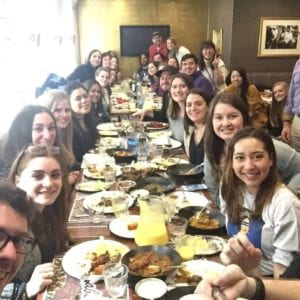 2. I understand that you recently lead a course together in NYU London, Shifting to a Strength Based Paradigm: A Focus on Autism and Well-being Comparative Analysis Between the UK and the US. Can you describe the purpose of the course? What kinds of students participated and how was the course structured?
2. I understand that you recently lead a course together in NYU London, Shifting to a Strength Based Paradigm: A Focus on Autism and Well-being Comparative Analysis Between the UK and the US. Can you describe the purpose of the course? What kinds of students participated and how was the course structured?
Kristie– The purpose was to really focus on this shift to strengths because a lot of people get trained in a deficit model of remediation with autistic individuals. Stephen comes from special education. I come from occupational therapy. We really like to have a diverse group of students that can kind of go back and touch their respective disciplines after being “brainwashed” with a strengths based approach by us. This is a graduate course and we had over 40 applications for the first time that it was offered as a global course in London so it was a successful course right out of the gate globally. We had 28 graduate students from ten different programs.
3. How has your work together on this comparative analysis and your experience in London informed your future research?
Kristie – Absolutely. One example I can mention was a meeting with autistic researchers and non-autistic researchers at London South Bank University where they have a collective called PARC – Participatory Autism Research Collective – that truly is a partnership between autistic researchers and non-autistic researchers. I am in discussions now with Stephen and a number of other people to do the same type of collaborative research collective here. Also we met with people from the University College London CRAE – the Centre for Research in Autism Education – and they have a project called “Know your Normal” which is a collaboration between PARC researchers and researchers ad UCL about mental health and knowing what is normal for you as an autistic individual and knowing what is not normal so you can seek out assistance and help and really know when you are not feeling like you should. So, for example, an autistic individual lines up things normally or puts things in order normally, that is not a sign of a mental health issue and that is where that phrase “know your normal” comes in. I actually talked to people at the Department of Education and we are actually looking to bring Laura Crane and people from the “Know your Normal” project to do some work with us and the Department of Education and the ASD Nest support project and here at NYU with our autistic students. Those are two examples that come to mind.
Stephen – We had great experiences and saw how they are moving research and benefitting autistic people. We also got invited to the House of Commons where they were interested in my experiences around the world. I remember them asking me if I could rank countries in order of service provision and what I found is that it is impossible to rank countries but what one can do is look into areas of best practices in Peru, Russia, Japan, China, and so on. And there is always much to learn from people in other countries supporting autistic individuals. There was the autistic choir Kristie mentioned which was a choir of autistic individuals who just recently felt comfortable enough to disclose their being autistic to the greater public so that is very exciting.
4. I understand that you both were invited to two meetings at the British House of Commons and the Member of Parliament Stephen Twigg to discuss autism, best practices in supporting people on the autism spectrum, and the ASD Nest Support Project. Can you tell us how those meetings came about and what was discussed? Do you expect further engagement within the UK?
Stephen – They were very interested in what I had to offer, my insights in terms of supporting autistic individuals in other countries and I felt that at the end of it they had understood that it is probably not that useful to be ranking countries in terms of support but so much more useful to be studying what is happening in particular countries. So that was exciting.
Kristie – They were familiar with Stephen’s work and by extension my work. Stephen is a rock star internationally. And then I came along to talk about the work we are doing on inclusion which they were very interested in. They are ahead of us I think in engaging autistic individuals in research and partnerships and I think that they are doing some great work in terms of collaboration with the autistic stakeholder community. One of the things that we talked to Stephen Twigg about is just this idea of comprehensive inclusion programs. NYU’s ASD Nest support project in NY demonstrates that autistic children are capable of doing grade-level work with the proper supports. Often with inclusion, if the kids are capable of doing grade-level work they just kind of throw them in the right class and hope for the best and may provide some therapy where it is not really integrated into a comprehensive program and that is not really the best way to educate and do inclusion. So they were very interested in our program. We have already replicated the program in Denmark and we are in talks right now with school districts in California, Florida, we have another one that just signed a contract with us in NY. So we have had success replicating that model and there seemed to be interest for London as well. So we’ll continue to see what happens there.
5. While at NYU London, Professor Shore was interviewed by BBC Russia about his work with autistic children, including music lessons and other offerings. Professor Shore – Can you tell us more about this work and how it drew the attention of the BBC?
Stephen – I have been to Russia eight times already and I have been involved with an organization called Our Sunny World. This is a center for mainly autistic individuals, 350 at last count. What I found fascinating about the center is that they too follow a strengths-based approach and the idea of matching reasoned practice with specific individual needs. So, for example, they look at applied behavior analysis as one of the tools that can be helpful for autistic individuals as well as daily life therapy, and other methods. I find that very exciting. There is also a large sensory component that I find very helpful as well. It is organizations like this that perhaps aren’t that well known but are doing some incredible work and we better collaborate with them.
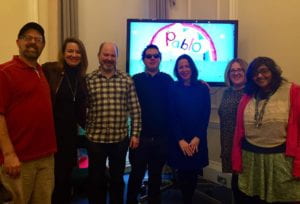 6. As part of you course, you had some remarkable guest lectures and panel discussions, including a panel related to Pablo, a BBC Children’s program about a five-year-old autistic boy. The panelists included the program’s creator, Grainne McGuinness, its head writer Andrew Benner (who is also the head writer for the popular children’s show Thomas & Friends), autistic writer and the voice of Wren on the show Sumita Majumdar, and an autistic consultant Paul Issacs. What did you and the students learn about the creation of the show, its production, and its audience? How has it been received? Why is it important to have autistic characters portrayed in children’s television?
6. As part of you course, you had some remarkable guest lectures and panel discussions, including a panel related to Pablo, a BBC Children’s program about a five-year-old autistic boy. The panelists included the program’s creator, Grainne McGuinness, its head writer Andrew Benner (who is also the head writer for the popular children’s show Thomas & Friends), autistic writer and the voice of Wren on the show Sumita Majumdar, and an autistic consultant Paul Issacs. What did you and the students learn about the creation of the show, its production, and its audience? How has it been received? Why is it important to have autistic characters portrayed in children’s television?
Stephen – It lends a certain amount of authenticity when you have autistic people involved in anything related to autism. In this case we’re talking about a tv series, but the same holds for research, the same holds for education, which is why Kristie and I deliver our course collaboratively. I provide the autistic point of view as related to education, Kristie provides the professional a point of view of occupational therapy. Working together in education, in research, in media, and in all aspects involving autistic individuals provides a more authentic view of autism and better illustrates what we can do to promote fulfilling and productive lives.
Kristie – I think that the Pablo show is unique in certain ways. There are a few shows featuring autistic characters. For example Sesame Street has Julia, the autistic Muppet, and the puppeteer for Julia is a mother of a child with autism. With Pablo what they did was really beautiful. The head writer Andrew Benner set out to talk to adults that are autistic in the UK about their experiences and challenges to simply get their perspective on the show. And I think the originator Grainne McGuinness was really mindful of talking to autistic individuals and including their voices. What happened was that as he went around he had a whole bunch of autistic writers and autistic actors that he could hire and I think that just like in different fields, autistic individuals are looking for employment opportunities. And he hired them. So to be gainfully employed in children’s television representing your authentic selves is really powerful. A lot of times tv shows will portray someone that’s autistic with a non-autistic actor which is unfortunate, really unfortunate, when there are a lot of autistic actors who are looking for work. So this show becomes an extension of their worlds and their perspectives and because of that it just becomes a really funny, quirky show. Not necessarily because they are all autistic but because of their point of view that it is an autistic point of view that makes it really interesting and something that any kid can relate to.
7. Do you believe it is important for research relating to autism and interventions to have an international perspective? Was there anything you learned while in London that was surprising, noteworthy, or that may influence your work moving forward?
Stephen – Interestingly, after we had gone through the course, we felt that all of the guest presenters were great and it all went really well and there weren’t any regrets with what we had done which was really cool.
Kristie – We really saw the transformation in the students. It was really something to see. Their transformation of really looking at something in a fundamentally different way. This was perhaps in part because the students were all from different programs so may not have been exposed to this kind of work before. And the predominant narrative around autism is this kind of remediation, let’s fix it, let’s normalize behavior so those messages are often received in many programs so this was a very opposite message.
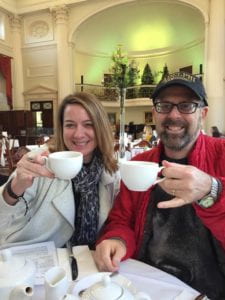 8. Is there anything else that you would like to share about your work, your time at NYU London, or beyond?
8. Is there anything else that you would like to share about your work, your time at NYU London, or beyond?
Stephen – It is important that the primary question be: “What can the autistic individual do?” That said, there can be significant challenges that come with being autistic and if there weren’t, why would this course exist? However, we need to flip the paradigm around that Kristie so beautifully shows on her power point slide when we look at typical reports of presenting problems – there is a big section on the top weighing down this little section on the bottom with one or two lines presenting strengths and it needs to be the other way around.
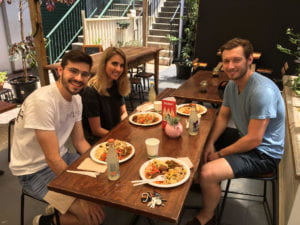 On December 6, 2018, NYU Sydney’s Global Equity Fellow, Juliana Maia led a group of students to Summer Hill to visit the Four Brave Woman initiative.
On December 6, 2018, NYU Sydney’s Global Equity Fellow, Juliana Maia led a group of students to Summer Hill to visit the Four Brave Woman initiative.

